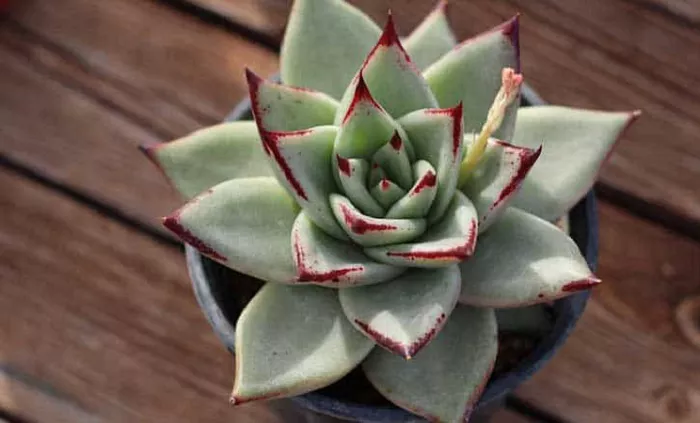Succulents are often called the easiest plants to grow, but is that really true? While they’re more forgiving than many houseplants, they still need the right care to thrive. Overwatering, poor lighting, and incorrect soil can quickly turn a healthy succulent into a dying one. This guide covers everything—from picking the right varieties to solving common problems. Whether you’re a first-time plant owner or a seasoned gardener, you’ll learn how to keep your succulents vibrant and strong. Let’s get started!
Understanding Succulent Care Basics
Succulents store water in their thick leaves, stems, or roots, which helps them survive dry conditions. But this doesn’t mean they can live without care. Here’s what you need to know to keep them healthy:
Light Requirements: How Much Sun Do They Really Need?
Most succulents love bright, indirect sunlight. Indoors, a south or east-facing window is ideal.
Too little light? They’ll stretch out (called etiolation), becoming leggy and weak.
Too much direct sun? Their leaves can scorch, turning brown or crispy.
Pro Tip: Rotate your succulents every few weeks so all sides get even light. If natural light is low, use a grow light (LED or fluorescent) for 6–8 hours a day.
Watering the Right Way: The Biggest Mistake to Avoid
The first killer of succulents? Overwatering.
How often to water? Only when the top inch of soil is completely dry (stick your finger in to check).
How to water? Soak the soil thoroughly, then let excess water drain out. Never let them sit in water.
Winter care: Most succulents go dormant in winter—water half as often (some need water only once a month).
Warning: Soft, yellow, or mushy leaves mean too much water. Wrinkled, shriveled leaves mean too little.
Soil and Drainage: Why Regular Potting Mix Fails
Succulents hate wet feet. Regular potting soil holds too much moisture and can cause root rot.
Best soil mix: Use cactus/succulent soil mixed with perlite or coarse sand (50/50 ratio).
Drainage is key: Always plant in pots with drainage holes. Terracotta pots are great because they absorb extra moisture.
Choosing the Best Succulents for Beginners
Some succulents are much easier to grow than others. If you’re new to these plants, start with these hardy, low-maintenance varieties:
1. Aloe Vera
Why it’s great: Tough, drought-resistant, and useful for soothing burns.
Care tips: Bright light, water every 2–3 weeks.
2. Echeveria
Why it’s great: Beautiful rosette shapes, many colors (pink, blue, purple).
Care tips: Needs lots of light; water when soil is dry.
3. Haworthia (Zebra Plant)
Why it’s great: Thrives in lower light, perfect for desks or bathrooms.
Care tips: Water every 3 weeks; avoid direct sun.
4. Sedum (Stonecrop)
Why it’s great: Great for outdoor gardens, spreads easily.
Care tips: Full sun to partial shade; drought-tolerant.
5. Jade Plant (Crassula ovata)
Why it’s great: Long-lived, tree-like growth.
Care tips: Bright light; water when soil is dry.
Avoid these tricky succulents until you’re more experienced:
Lithops (“Living Stones”) – Very sensitive to overwatering.
String of Pearls – Needs perfect watering balance.
Mimicry Plants (Pleiospilos, Conophytum) – Easy to kill with too much water.
Common Succulent Problems and How to Fix Them
Even tough succulents can run into trouble. Here’s how to diagnose and fix common issues:
1. Yellow, Mushy Leaves (Overwatering)
Cause: Roots are drowning and rotting.
Fix:
Stop watering immediately.
Remove the plant, trim black/mushy roots.
Repot in fresh, dry soil.
Wait a week before watering again.
2. Stretched, Leggy Growth (Not Enough Light)
Cause: The plant is reaching for more light.
Fix:
Move to a brighter spot.
Use a grow light if needed.
You can behead the stretched part and replant it.
3. Brown, Crispy Leaves (Too Much Sun or Underwatering)
Cause: Sunburn or extreme dryness.
Fix:
Move out of direct sunlight.
Water more often (but still let soil dry between waterings).
4. Pests (Mealybugs, Spider Mites, Fungus Gnats)
Signs: White fluff (mealybugs), tiny webs (spider mites), flying bugs (fungus gnats).
Fix:
Wipe leaves with rubbing alcohol (70%).
Use insecticidal soap or neem oil.
For gnats, let soil dry out completely and use sticky traps.
Advanced Tips for Thriving Succulents
Once you’ve mastered the basics, try these next-level tips for even better growth:
1. Propagating Succulents (Free New Plants!)
You can grow new succulents from leaves or cuttings.
Leaf propagation:
Gently twist off a healthy leaf.
Let it dry for 1–2 days until the end callouses.
Place on dry soil; mist lightly every few days.
Roots will form in 2–4 weeks.
Stem cuttings:
Cut a healthy stem (use clean scissors).
Let it dry for 2–3 days.
Plant in soil; water lightly after a week.
2. Seasonal Care Adjustments
Spring/Summer: Growth season—water more, provide bright light.
Fall/Winter: Dormant season—water less, avoid cold drafts.
3. Fertilizing (Do They Even Need It?)
Best fertilizer: Diluted 10-10-10 succulent fertilizer (half strength).
When to fertilize: Only in spring/summer (once a month).
Never fertilize in winter—it can harm dormant plants.
Final Thoughts: Are Succulents Really Easy to Grow?
Yes—if you follow their basic needs. The biggest mistakes are overwatering and poor light. Start with hardy varieties, use the right soil, and water only when needed. Once you get the hang of it, succulents can thrive for years with minimal effort.
Ready to grow your own? Pick a beginner-friendly succulent, set it in bright light, and water sparingly. With a little attention, you’ll have a stunning, low-maintenance plant collection in no time!


